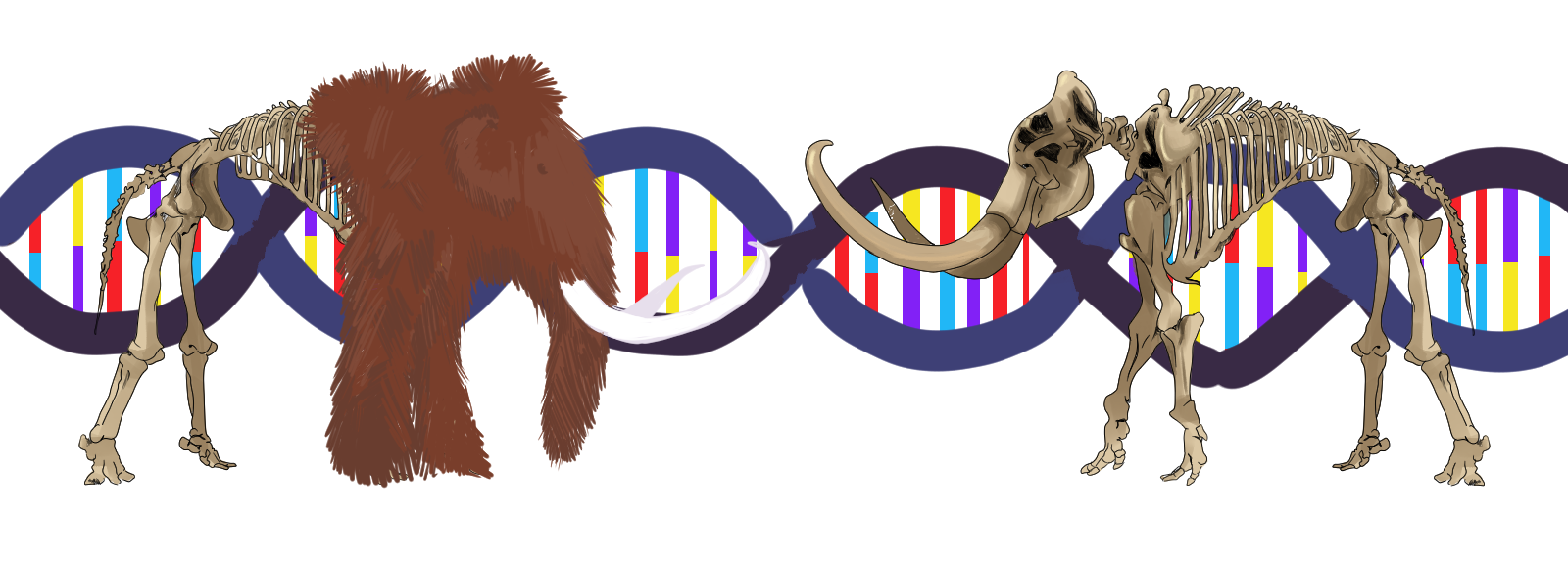
Should we de-extinct species?
The widespread extinction of plants and animals in the past 500 years has devastated Earth’s biodiversity. However, bioengineering companies have an unprecedented opportunity to not only fix catastrophic damage to the environment, but also significantly advance our knowledge of biology and ecology.
According to the International Union for Conservation of Nature Red List, at least 777 known species of animals have gone extinct since 1500. The Center for Biological Diversity claims that 99% of these extinctions resulted from human activities such as habitat loss, overhunting, climate change, pollution and introduction of invasive species, emphasizing that human practices artificially speed up the process of extinction well beyond its natural rate. Because of the widespread harm humanity has caused, correcting those mistakes with de-extinction technology has gained more importance than ever.
Opponents of de-extinction, as evidenced in an article from the Ecological Society of America, point out that the sudden reintroduction of a previously extinct species would throw off the balance of the current ecosystem. However, real-life examples prove that reintroducing a species can greatly benefit the ecosystem.
The return of gray wolves to Yellowstone National Park marked one of the most famous examples of reintroduction. By 1926, government control efforts eradicated the last gray wolves from Yellowstone, and in the decades following their removal, the Greater Yellowstone Ecosystem suffered. Without a main predator, the elk population skyrocketed in the park, leading to more trees and plants getting eaten, which resulted in less food and shelter for other species. Starting in 1995, park officials addressed the crisis by reintroducing gray wolves to the park from Canada. Since then, the population has grown to around 100 wolves, decreasing the elk population back to healthy numbers, stimulating plant growth and restoring balance in the ecosystem.
Bioengineers believe that the revival of Yellowstone’s wolves can be replicated with other species and ecosystems. Smithsonian Magazine claims that the reintroduction of mammoths to the Arctic tundra could help restore natural grasslands by reducing encroachment of trees and shrubs. Evidence also shows that mammoths would trample snow cover, exposing permafrost to colder air temperatures and slowing its melting process that releases greenhouse gases. De-extinction programs have a long-term goal of reintroducing herds of mammoths to the Arctic, where they would fit the ecological niche and have a key role in the fight against climate change.
If de-extinction technology successfully resurrects lost species, it could be a vital lifeline to currently endangered species like the northern white rhino, deemed functionally extinct in 2018 after the last male died, leaving only two remaining females. According to the BBC, scientists are attempting to save the species through in vitro fertilization (IVF) by using sperm collected from since-deceased male rhinos, as well as stem cell technology to grow new embryos in labs. After a project with similar southern white rhinos led to a successful pregnancy, northern white rhinos move closer to making a comeback.
As human actions cause the extinction of species to increase rapidly around the world, new technologies can slow it down and restore what the world lost. The advances made by bioengineering companies have a chance not only to set things right, but also to launch our understanding of biology to new heights and unlock scientific possibilities.
De-extinction is understandably exciting for many people. The idea of seeing a woolly mammoth for the first time or bringing back animals that have not been seen in generations sounds enticing. However, what happens to these creatures after they are reborn requires heavy consideration. There are only two ways it could go: either the animals are released back into the wild, or they are kept in captivity. Both equally represent systems of cruelty.
Reintroducing a species back into the wild can pose dangerous consequences, especially with the state of ecosystems adapted to survive or somewhat flourish without the previously extinct organism. Take for example the woolly mammoth, a commonly proposed animal to revive from extinction. The woolly mammoth went extinct an estimated 10,000 years ago, and much has changed in the snowy tundras it once inhabited. The critically endangered Siberian tiger and Amur leopard could have their delicately balanced predator-prey relationship offset if the wooly mammoth returns to the area without previous scientific work for studying the system when it included the organism. Essentially, the Siberian tiger and Amur leopard could go extinct at the slightest risky change, including bringing back an animal that has been dead for 10,000 years. This circumstance relates to paleo-rewilding, where ecologists introduce near-relatives of an extinct species.
These once-extinct species will also take loads of funding in order to create. Colossal BioSciences announced on Jan. 15 this year that it raised $200 million to bring back the woolly mammoth, the Tasmanian tiger and the dodo bird. On the other hand, a study published in 2015 in an issue of Current Biology found that it would only take a mean of $1.55 million to save an endangered or critically endangered species, or $2.1 million today when adjusted for inflation. The $200 million spent to revive just three species could instead protect up to 95,000 animals, including all 10,787 endangered or critically endangered species on the IUCN Red List, making this spending an extravagant spectacle disguised as conservation.
If the organisms are not released into the wild, they will likely be kept in captivity. If this is done, any argument about the moral obligation of humans trying to conserve and restore ecosystems is debunked. As already established, placing de-extinct animals into the wild will not necessarily restore ecosystems, and neither will keeping these animals captive. Captivity has been proven harmful for multiple animals such as elephants, tigers and orcas with 180 orcas dying in captivity according to Whale and Dolphin Conservation. Lack of space, needs for socialization and mistreatment are not uncommon, and expecting something different for human reinvented species is irrational. Rather than making an effort to preserve species that are still alive, the de-extinct animals, in this case, will be nothing more than a spectacle.
Reviving extinct animals may seem like a way to restore ecosystems, but it only creates more problems. Whether through captivity or disrupting ecosystems that have already adapted, de-extinction leads to suffering for the animals involved. Instead, conservation should focus on protecting the biodiversity we still have and preserving the ecosystems that are at risk.
-
 UncategorizedFounding the bell scandal
UncategorizedFounding the bell scandal -
 UncategorizedMounds View to host national tournament
UncategorizedMounds View to host national tournament -
UncategorizedViewer Photo Contest Honorable Mentions
-
Uncategorized[STUDENT SUBMISSION] 'Peace' by Coco Frank
-
 UncategorizedH2O for Life: bringing knowledge and water to communities in need
UncategorizedH2O for Life: bringing knowledge and water to communities in need -
UncategorizedKati Belina jumps into action
-
 UncategorizedKeep calm and Darb on
UncategorizedKeep calm and Darb on -
 UncategorizedRAMS reach for the stars
UncategorizedRAMS reach for the stars -
UncategorizedHow can you escape “the bubble?”
-
 UncategorizedEnvironmentalism
UncategorizedEnvironmentalism





